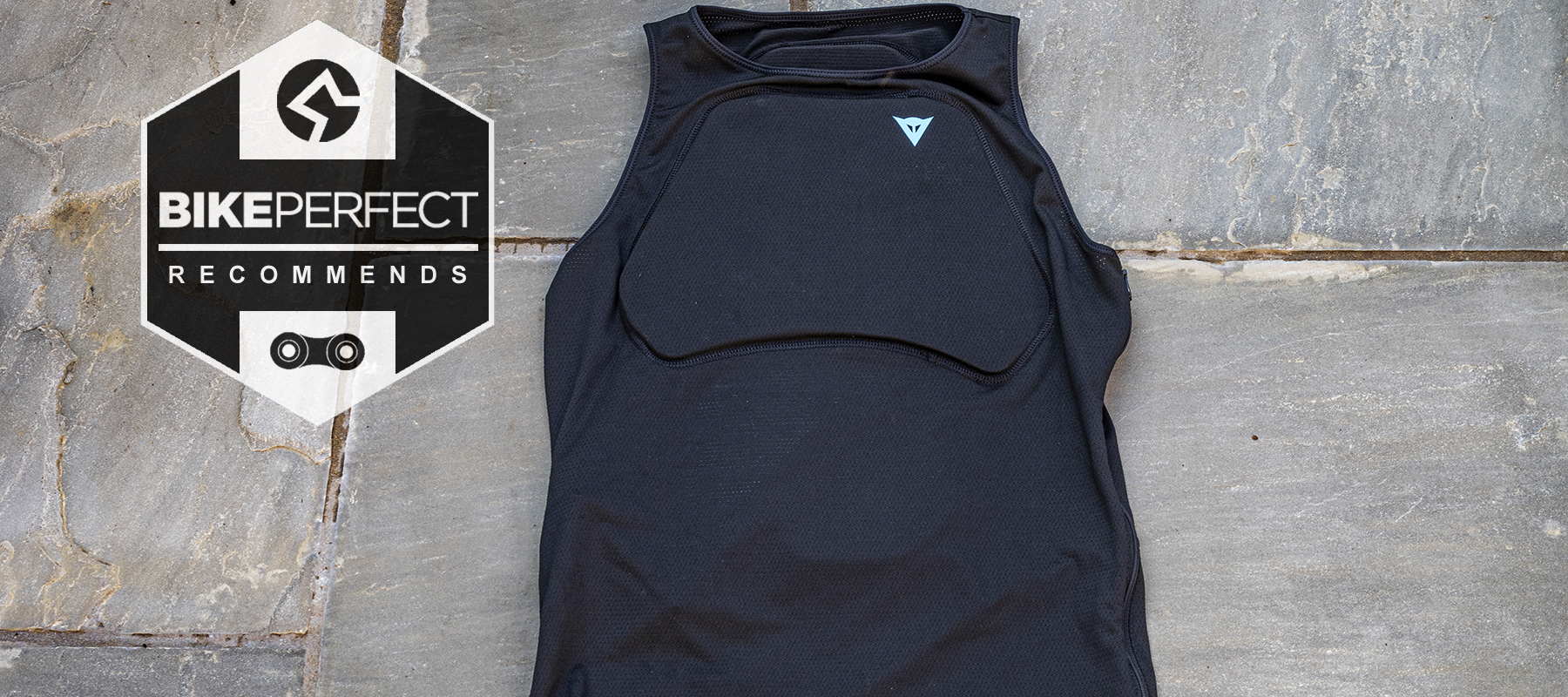Bike Perfect Verdict
Dainese’s Trail Skins Air vest is lightweight enough to wear on every ride, even coming with light padding on both sides of the upper body.
Pros
- +
Excellent value
- +
Premium fabrics throughout and effective padding
- +
Good breathability and wicking
- +
Two useful rear pockets with Velcro closure
- +
Longer shape doesn’t ride up and can be tucked in
- +
Lightweight
Cons
- -
Back panel doesn’t extend as low as the coccyx
- -
Back panel doesn’t extend as wide under shoulder blades to protect side ribs and vital organs
- -
Not the most slimline against the body
Why trust BikePerfect
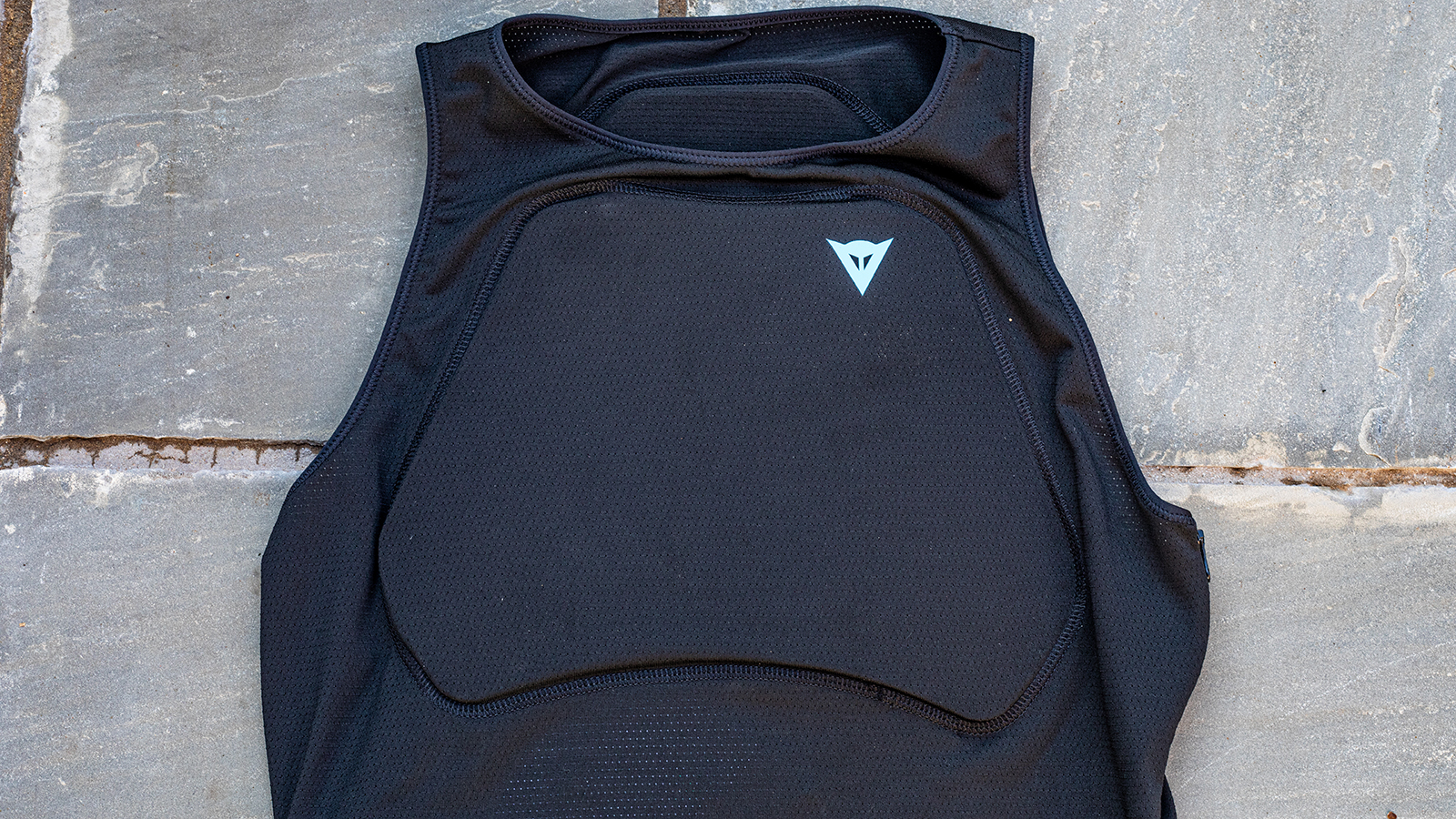
Designed as Dainese’s body protection with the most emphasis on freedom of movement, weight saving and ventilation, this Trail Skins Air is the lightest upper body vest we’ve tested and features in our best MTB body armor roundup.
Despite being so lightweight, there’s still both front and rear protection by way of a minimal chest plate and a longer (albeit thin) spine-protecting central padding panel. Dainese also offers a version with shoulder pads to defend against impacts there called the Rival Pro Tee for $205 / £170.
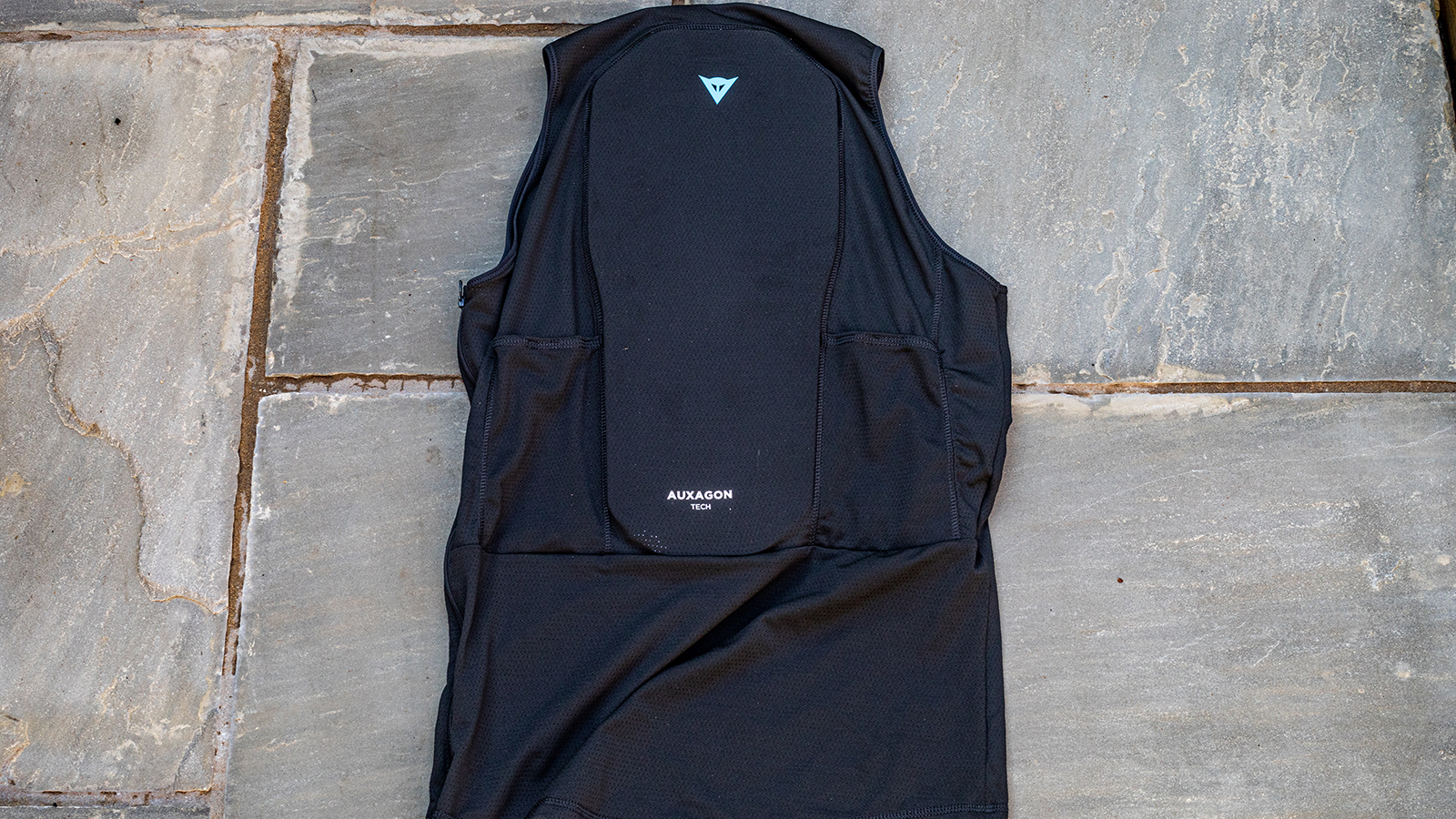
Design and specifications
Both of Dainese’s (Level 1) protection panels use three independent layers that can slide over each other and a criss-cross design where 55 percent of the surface area is open to let air seep inside onto skin. You can remove the pads to wash the vest separately, and can also take the chest panel out for an even lighter, more invisible riding feel if you want.
Unlike some lesser rivals, the main material body of Dainese’s vest is long enough to tuck into trouser waistbands, which helps stop it riding up while you're pedaling. The 90 percent polyester / 10 percent elastane fabric itself is reasonably stretchy and also has loads of tiny micro perforations to help it breathe and wick sweat away from the skin so it can evaporate. On the rear of the vest, two pockets on either side of the back panel lower down allow for stashing essentials.
The Italian brand offers five different sizes to ensure a good fit and it’s also great that the price here is very competitive for double-sided protection with this finish and build quality.
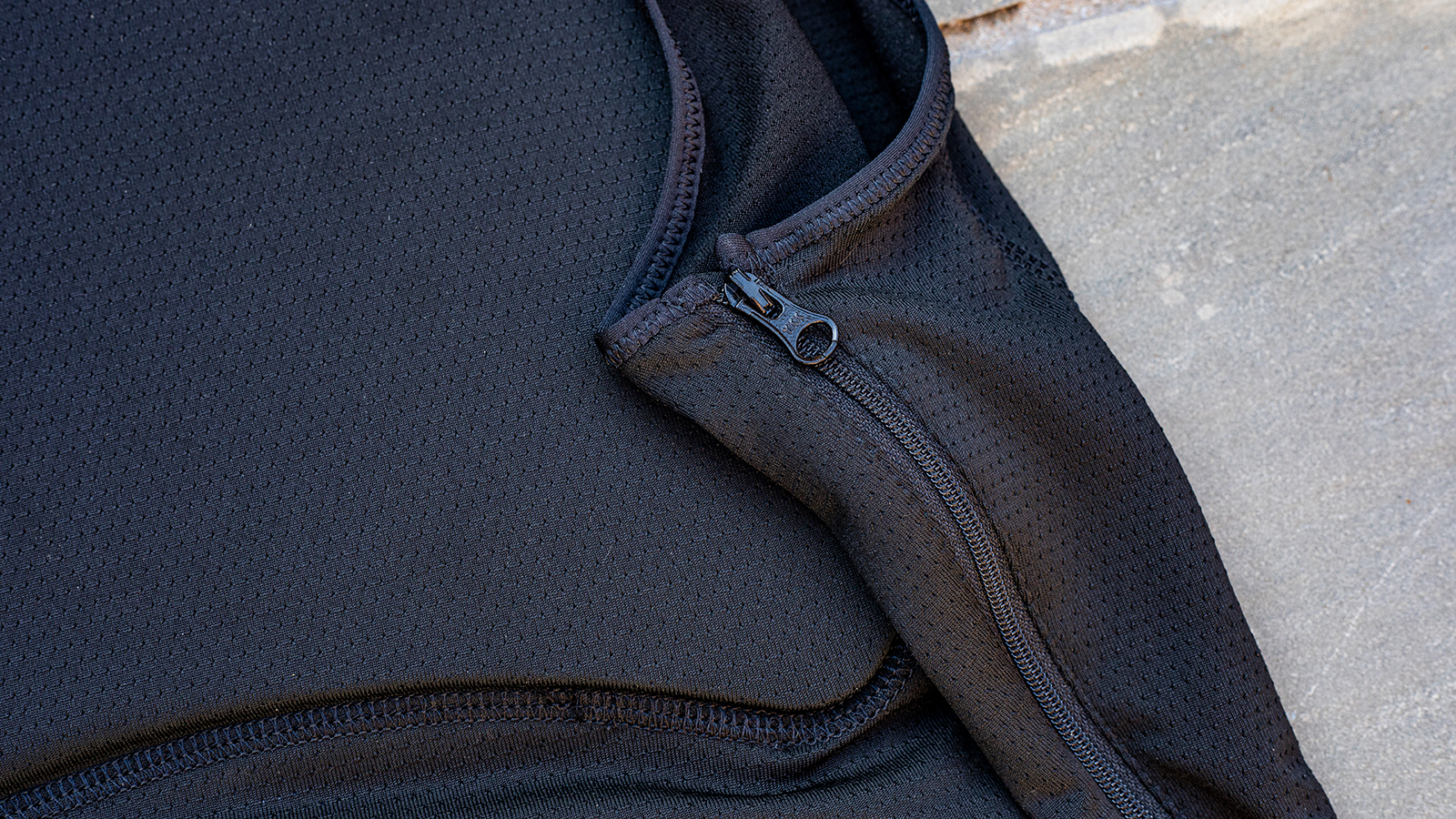
Performance
The Trail Skins vest material isn’t as stretchy and flexible as some, like the Bluegrass Seamless Lite D3O we’ve also tested, but still sits in pretty tight and snug to the body. The fabric’s handle is smooth and soft and there are no annoying seams or zips to dig into skin anywhere (including where the sideways zipper fastens under the armpit thanks to a sufficiently big opening).
Although the Trail Skins’ back panel isn’t as broad or long as many other vests, it does offer decent coverage at shoulder height, without ever interfering with the back of the helmet when you're pedaling or sat in an uplift bus. This rear padding can also twist and deform, so it’s reasonably flexible once warmed up by being against the body.
That said, despite covering less of the flanks, Dainese’s back panel doesn’t trace the curves of the back as well as some other brands’ and can feel a bit more ‘rigid’ and disconnected from the spine’s curvature than some (like the Bluegrass vest that seems to deform to body shape and totally trace the back and shoulders and also sit a bit more snuggly against the body).
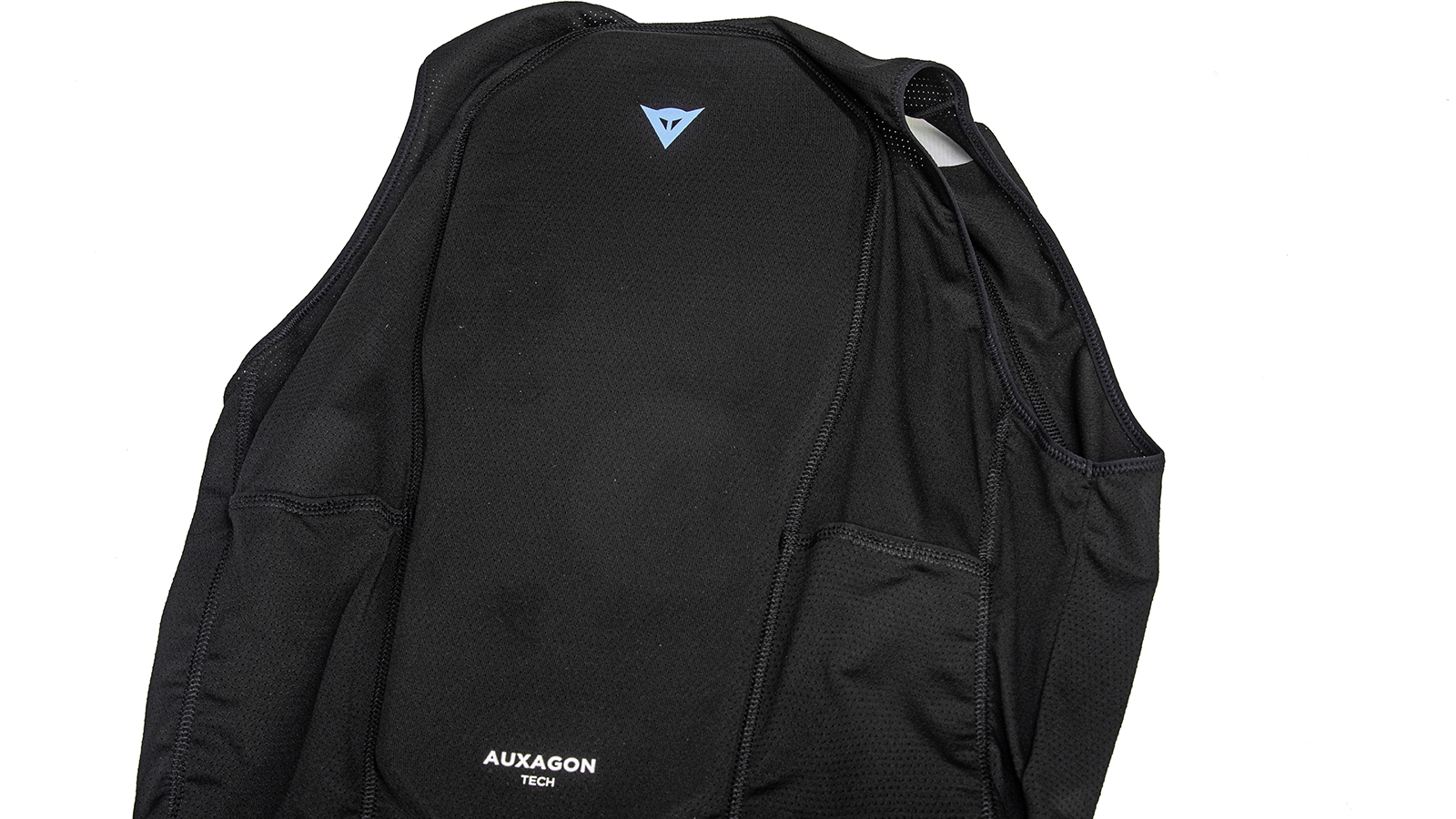
On the front facing side, the pre-shaped chest panel does a better job of sitting close to the pecs and doesn’t make you look like a stormtrooper under a riding jersey either.
Breathability and moisture wicking is pretty effective, although again not quite at Bluegrass levels, where that brand’s wide-open mesh feeds more cooling air onto the upper part of the front body.
Where Dainese’s vest shines brightest though is in being so noticeably lightweight, which means even with the chest and spine panels in place, it’s really easy to forget you’re wearing any protection at all, unless it’s a scorching summer day when heat does build up inside a little.
It’s a versatile product too, seeing as you can slide out the chest panel and just have a very minimal, super lightweight back plate vest that easily fits under a T-shirt for pretty much every ride.
Verdict
Dainese’s vest is one of the lightest most invisible protection vests on the market. Coverage here doesn’t extend to side ribs or organs on the back, so this vest is more about being so comfortable you can wear it on every single ride, rather than maximum protection.
I’d argue that makes it especially suited to aggro trail riders pushing hard or e-bikers who always want a bit of protection for the bigger distances and extra descents those bikes allow rather than occasional bike park visits.

Tech specs: Dainese Trail Skins Air Vest
- Price: $135.99 / £119.95 / €129.95
- Weight: 420g (Large)
- Sizes: S, M, L, XL, XXL
- Colors: Black
- Rival products: Bluegrass Seamless Lite D30, IXS Flow protection vest

An ex-elite downhill racer, Mick's been mucking about and occasionally racing mountain bikes for over twenty years. Racing led to photo modelling and testing kit for magazines back in the day, and, nowadays, he's mostly riding enduro-style terrain on conventional and electric bikes. As curious as ever about products and tech, he's as likely to be on the other side of the lens or computer screen rating, reviewing and shooting all the latest gear. Mick's list of regular clients includes Bike Perfect, MBR, MBUK, and most of the leading UK MTB publications at one point or another.
